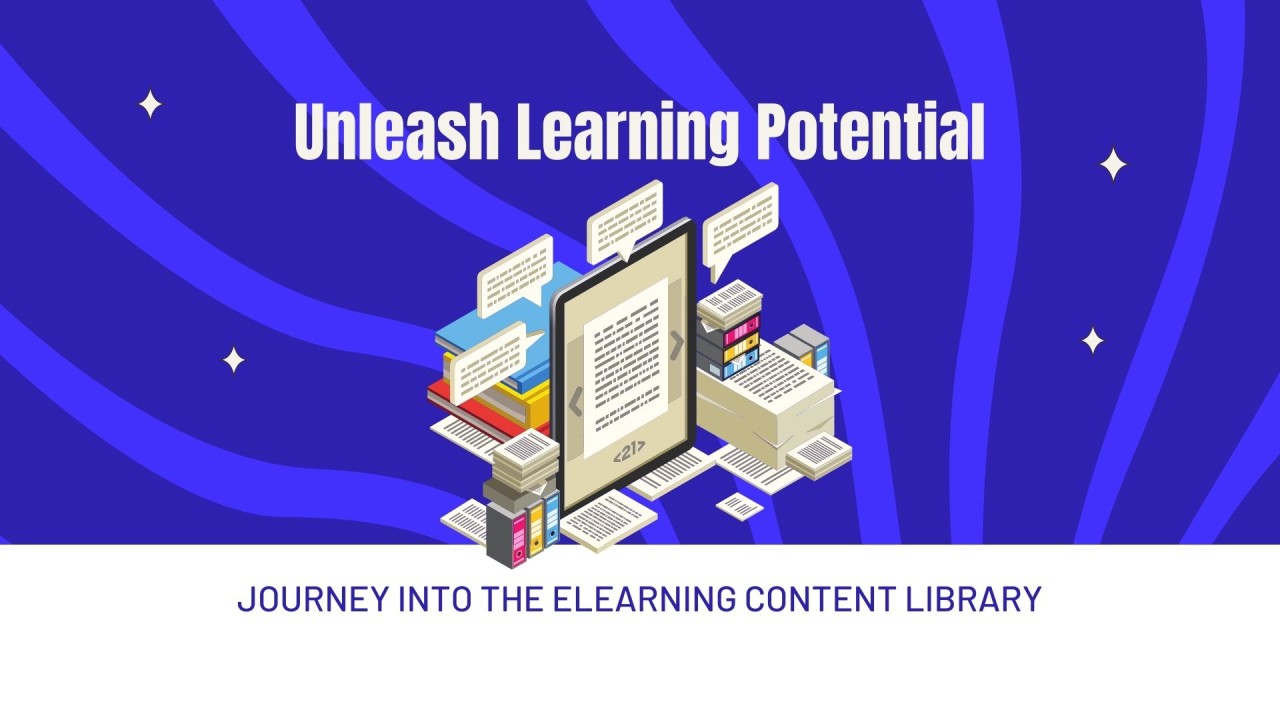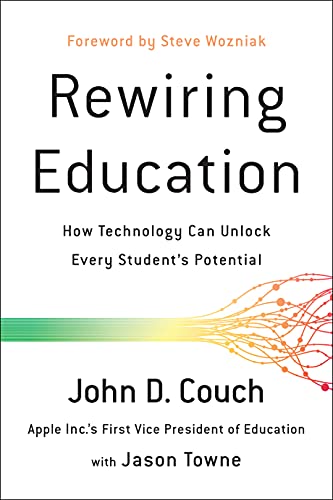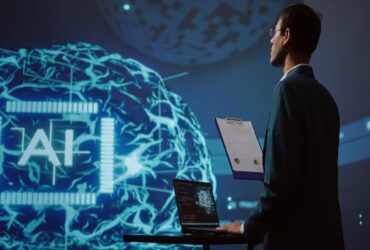Educational technology enhances learning by facilitating access to information and enabling interactive experiences. It supports diverse learning styles through personalized and adaptive tools.
Educational technology, often referred to as EdTech, revolutionizes the traditional classroom environment by integrating digital tools and resources. This innovation offers students and educators alike various platforms for collaboration, communication, and content creation. EdTech empowers learners to engage with material in novel ways, breaking geographical barriers and providing real-time feedback.
Rich multimedia resources and game-based learning applications maintain student interest and cater to different preferences. The thoughtful application of technology in education paves the way for a more inclusive and dynamic learning journey, accommodating students’ individual needs and pacing. By harnessing the power of EdTech, educators can craft a learning experience that is both effective and relevant for the 21st-century learner.
Evolution Of Educational Technology
The Evolution of Educational Technology has transformed how we learn. The journey from scratching symbols on stone tablets to swiping on touchscreens shows a vibrant history of innovation. With each leap in technology, education has become more interactive, engaging, and accessible. Let’s explore the landmarks in this ever-evolving narrative:
From Blackboards To Interactive Whiteboards
Once upon a time, dusty chalk and blackboards ruled the classroom. They were the stage upon which teachers performed the act of imparting knowledge. Fast-forward to today, and you’ll find the humble blackboard has evolved into the interactive whiteboard. These digital marvels allow for multimedia presentations and real-time collaboration, making the learning experience more dynamic.
Edtech Growth Spurt In The 21st Century
The first two decades of the 21st century witnessed an unprecedented EdTech growth spurt. Personal computers, tablets, and smartphones brought educational resources to our fingertips. Online platforms now offer courses for every imaginable topic. The rise of Learning Management Systems (LMS) has streamlined the process of teaching and evaluating, propelling the academic world into a new era of efficiency and connectivity.
Interactive platforms have paved the way for personalized learning experiences. Here are some key figures in the rise of modern EdTech:
- Laptops and tablets in every classroom
- E-books and online libraries
- Virtual reality (VR) field trips
- Gamification of learning modules
- Data-driven personalized study plans
All these elements work together to make education an ongoing, engaging, and personalized journey.

Credit: www.amazon.com
Enhancing Engagement Through Tech
Educational technology transforms how we learn. It makes lessons lively, fun, and interactive. Using tech, students get involved in their studies like never before. Let’s explore how these tools boost engagement.
Games And Interactive Modules
Imagine learning through play. That’s what educational games do. They turn complex concepts into exciting challenges. Interactive modules help students visualize and apply knowledge in real-time. These tools make learning stick.
- Visual aids like diagrams and videos explain tough ideas.
- Quizzes test understanding and offer instant feedback.
- Simulations create a safe space for experimentation.
Customizing The Learning Experience
EdTech adapts to every student’s needs. It respects different learning speeds and styles. Tech brings personal touch to the classroom. With adaptive learning software, each child faces tasks tuned to their level. This approach ensures no one falls behind.
| Features | Benefits |
|---|---|
| Flexible learning paths | Matches student’s pace |
| Accessible resources | Learn anytime, anywhere |
| Instant feedback | Helps correct mistakes quickly |
With these tools, teachers can track progress too. They see which students need help. This data-driven approach supports each student uniquely.
Bridging Geographical Gaps
Educational technology has transformed how we learn, uniting students across the globe. Bridging geographical gaps means anyone, anywhere, can access quality education. Distance no longer restricts learning opportunities. Let’s dive into how technology bridges these gaps.
Online Classrooms: Learning Without Borders
Technology gifts learners a virtual seat in classrooms miles away. Through online platforms, students join classes beyond their local schools. It’s a digital passport to world-class education.
- Immediate access to diverse courses
- Flexible schedules fit any lifestyle
- Certificates and degrees from top institutions
Global Collaboration For Broader Perspectives
Educational technology encourages students to work with peers around the world. This global network enriches learning with varied insights.
| Benefits of Global Collaboration | Impact on Learning |
|---|---|
| Cultural exchange | Boosts understanding and respect |
| New problem-solving techniques | Enhances critical thinking |
| Diverse perspectives | Expands worldview |

Credit: www.linkedin.com
Supporting Diverse Learning Styles
Educational technology embraces individual learning needs. It allows each learner to study in their own style. This is vital in today’s diverse classrooms.
Multimodal Learning Tools
Multimodal learning tools support different ways of learning. These tech tools offer videos, interactive tasks, and audios. They help kids learn by seeing, hearing, and doing. Let’s look at some examples:
- Visual Aids: Animations and infographics.
- Auditory Resources: Podcasts and audiobooks.
- Kinesthetic Options: Interactive games and simulations.
Adaptive Learning Platforms
Adaptive learning platforms change to fit the learner. They find out what a kid knows. Then, they set just-right challenges. These platforms use quizzes and activities to track progress. They help kids grow at their own pace.
FeatureBenefit for Learners| Personalized Paths | Builds confidence with tailor-made lessons. |
| Instant Feedback | Helps correct mistakes in real-time. |
| Progress Tracking | Shows improvement and areas to work on. |
Measuring Progress With Analytics
Educational Technology has revolutionized the landscape of learning. Analytics allow teachers and students to measure progress like never before. Through tracking data, we can identify strengths and weaknesses. This leads to tailored teaching methods and personalized learning experiences.
Data-driven Instruction
Data-driven instruction uses analytics to guide teaching strategies. Teachers analyze results from quizzes and assignments. Then, they adapt lessons to fit student needs.
- Personalized Feedback: Students get help where they need it most.
- Real-Time Insights: Teachers identify trends quickly.
- Focused Learning: Lessons target specific skills.
Long-term Tracking For Continued Improvement
Long-term tracking maintains a record of student progress. It highlights how students improve over time. This data shapes the future learning path for consistent growth.
| Time Period | Skills Improved | Goals Set |
|---|---|---|
| Month 1 | Algebra Basics | Advanced Algebra |
| Month 3 | Essay Writing | Critical Analysis |
| Month 6 | Scientific Method | Experimental Design |
With consistent tracking, both students and educators see growth. This motivates ongoing improvement.

Credit: www.amazon.com
Challenges And Considerations
When it comes to integrating technology into education, various challenges arise. Teachers, students, and institutions must consider several factors to ensure success. Understanding these hurdles helps us create a more effective learning environment. Let’s delve into some of the key challenges and considerations.
Equal Access And The Digital Divide
Equal access to educational technology remains a significant concern. Not all students have the same opportunities to engage with digital learning tools. This gap creates the “Digital Divide”, which refers to the disparity between those who have access to modern information and communication technology, and those who do not.
- Availability of devices like laptops or tablets.
- Stable and fast internet connections at home.
- Resources for students with special needs.
These factors can impact a student’s ability to keep up with tech-driven curriculums. Efforts like school-provided technology and community internet programs aim to bridge this gap.
Keeping The Human Element In Tech-driven Education
Technology enhances learning but should not replace the human touch in education. Teachers play a crucial role in guiding students and providing personalized feedback. A tech-only approach can miss the nuances of individual student needs.
- Encouraging teacher-student interactions.
- Providing emotionally supportive learning environments.
- Incorporating collaborative projects.
Combining technology with the creativity and empathy of human instructors leads to a more balanced and effective educational experience. Technology should be seen as a tool to aid, not to replace, the human element in teaching and learning.
Frequently Asked Questions On How Educational Technology Help In Learning
How Does Edtech Enhance Student Engagement?
EdTech boosts engagement through interactive tools like digital quizzes, games, and simulations. These features make lessons more immersive, helping students stay focused and actively involved.
What Role Does Edtech Play In Differentiated Learning?
EdTech supports differentiated learning by letting teachers adjust content and pace. Adaptive platforms respond to each student’s progress so everyone receives support that matches their current level.
Can Edtech Improve Collaboration Among Students?
Yes, EdTech improves collaboration through shared documents, chat tools, and online workspaces. Students can complete group projects, exchange ideas, and stay connected even when they are in different locations.
Does Edtech Contribute To Teacher Efficiency?
EdTech increases teacher efficiency by automating grading, attendance, and routine tasks. This frees time for planning, feedback, and one-to-one support, which strengthens the overall classroom experience.
Conclusion
How Educational Technology Help in Learning becomes evident when you look at its impact on modern classrooms. Digital tools such as virtual classrooms, interactive quizzes, and gamified platforms keep students more engaged and focused. Edtech also supports personalised instruction, adaptive pathways, and quick feedback, which help students progress at a suitable pace. Accessibility improves as resources stay available on multiple devices, inside and outside the classroom. When teachers integrate technology with clear goals and sound methods, education becomes more efficient, inclusive, and future ready for students at every level.












































Leave a Reply